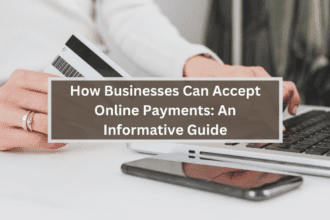Lead management is a crucial part of growing and succeeding in businesses these days. But, let’s face it, with so much data floating around, it’s easy to feel a bit lost.
Are you in the same situation?
The good news is that implementing data-driven strategies in your B2B lead management can make all the difference.
This article will break down four data-driven steps to drive successful B2B lead management strategies. And by following these steps, you’ll better understand your customers, identify the most effective lead generation channels, prioritize the good leads, and optimize the sales funnel for maximum success.

Photo by Jason Goodman on Unsplash
Step 1. Define your ideal customer profile
Successful companies know that if they sell to everybody, they sell to nobody. Meaning a company should first identify its target customer and then put in the time, energy, and resources to convert them.
You can start by defining your Ideal Customer Profile (ICP). Your ICP is a clear and concise description of your target customer. Knowing your ideal customer can help you better focus your resources and efforts on those who are most likely to convert into paying customers.
To create an effective ICP, analyze customer data, such as demographics, industry, job titles, pain points, and purchasing behavior. This will help you identify patterns and characteristics of your ideal customer.
Once you have this data, it’s time to refine your ICP. First, use the available data to create a detailed and clear profile of your ideal customer. This profile should include all the important information, such as their job title, location, company size, and the problem they face.
Don’t be afraid to go too specific. The more details you add to the profile, your ICP will be more accurate. Share this profile with your sales and marketing team; they can provide some inputs and valuable insights here.
Finally, as the business evolves, your ideal customer may change. Therefore, revisit and refine your ICP regularly.
Step 2. Utilize multiple lead-generation channels
Now that we’ve got our ideal customer profile, it’s time to start bringing in some leads. And the key to successful lead generation is utilizing multiple channels.
For a successful B2B lead management strategy, it is essential to determine where the leads are coming from. Your lead generation channels should align with the buying journey of the ideal customer.
One good thing about B2B companies is that they have many options, from social media and email marketing to events and webinars. However, finding the channels that work best for your business and your target audience is important.
You can’t just pick any few random channels and hope for the best. Instead, you need to track and analyze the effectiveness of each channel to see which ones are bringing the most leads and conversions. This might seem overwhelming to you, but remember, the time and effort you put here will save your business a lot of money and resources in the long term.
Step 3. Filter and prioritize good leads
Once the leads start rolling into the system, you need to filter them, separate them into different categories, and prioritize the ones most likely to convert immediately.
Most lead management systems offer a feature called Lead Scoring. Lead scoring is a process of ranking your leads based on their engagement level and fit with your ideal customer profile. A high lead score means leads have a better probability of becoming paying customers, and a low lead score means leads are not ready to buy right now and need to nurture them by providing valuable resources and information about the product.
Prioritize the leads with high lead scores and immediately assign them to the sales team. You can also use an automated lead distribution system to assign the leads to the sales reps quickly.
Businesses can implement an effective lead scoring and prioritization system using data analysis and machine learning. Additionally, they should:
- Define the criteria for lead scoring based on your ideal customer profile.
- Set points for each criterion based on its importance.
- Analyze the data and adjust the scoring system as needed.
- Allocate the resources accordingly, focusing on the highest priority leads first.
Step 4. Use data analysis to optimize your sales funnel
Usually, B2B sales funnels are complex and include many stages, from initial lead generation to closing the deal. But by tracking and analyzing key metrics throughout the funnel, you can find areas for improvement and increase conversion rates.
Data plays a crucial role in optimizing the sales funnel. Metrics like conversion rates, bounce rates, and time spent on each stage help businesses identify where potential customers drop off and why. This information can then be used to make adjustments and optimize the funnel for maximum success.
Below are a few tips for optimizing your B2B sales funnel with data analysis:
- Make sure you have proper tracking set up. This includes tracking tools like Google Analytics, CRM software, etc., that capture lead and sales data.
- Determine which metrics are most important for your business and track them consistently. Some common metrics include conversion rates, lead quality, and sales velocity.
- Regularly review and analyze the data to identify areas for improvement. This could include adjusting messaging, improving website design, or tweaking your lead nurturing process.
- Don’t be afraid to experiment with different strategies and iterate on what works. Continuously optimizing your sales funnel is key to achieving long-term success.
Summary
Implementing data-driven strategies in your B2B lead management can help you achieve long-term success for your business. The four steps outlined in this article help you better understand your ideal customer, identify the most effective lead generation channels, prioritize good leads, and optimize your sales funnel for maximum success.
Remember, data-driven strategies require time and effort, but they will save you money and resources in the long run. So, don’t be afraid to experiment with different strategies and continuously optimize your lead management process. By doing so, you can take your B2B lead management to the next level and achieve great success.








